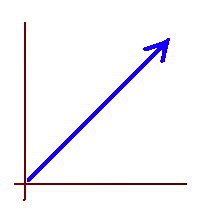The substitution method
Most students understand the concept of substitution when the task is to plug in a plain numerical value for a variable in a formula.
A typical example would be to evaluate y = 3x^2 - 5x + 2
when x = -1
Things change dramatically when the task involves plugging in an algebraic expression to replace a variable in another expression, even when the expression we are plugging in is of small complexity.
For example, from y = 3x + 5 plugging in the value 3x + 5 instead of y into the equation 2x - y + 4 = x + 3y - 1.
In the past I often had trouble explaining the process to some students. In my experience, a significant fraction of students taking the tutoring have some difficulties mastering this process. They get the concept in theory, and they are able to apply it in simple examples, but as the replacing expression grows in complexity, they quickly get stuck.
Lately though, I have dramatically increased my success rate for teaching this concept by using the following analogy. I go:
"O.K., time out. I have a question. Are you familiar with the computer program MS Word, the word processor? Have you used it to type some letters?"
They look at me as if I was asking them whether they are from this planet, and they say "Yeah..." Then I continue:
"Have you seen that little binoculars button that says Search and Replace? You know, when you have just finished writing a letter, but you are not very happy with a particular word you used several times, and all of a sudden you think of a better word. Then you click on that Search and Replace button, right? Instead of reading over the whole letter, looking for the word you want to change, and manually typing the new word over and over."
Then their eyes light up and they say: "Oh, yeah! And it gives you the total count for how many replacements were made!"
At this point I say: "Exactly! That is what we are doing here, search and replace. This equation is the letter and this other equation is the Search and Replace button." They silently look at me with a face that yells, "What are you talking about?" Then I proceed:
"Look, this is the letter, O.K.? Our document, from here to here, this equation: 2x - y + 4 = x + 3y - 1 . That is the whole document. And we are the program. This other equation here: y = 3x + 5, that is the Search and Replace button that says:
'Search the document for the letter y and every time you find it, replace it for this other phrase: 3x + 5.' So we perform the instruction, right? We go over the document, symbol by symbol. we copy the 2, we copy the x, we copy the '-' sign, and then we find a 'y.' Well, instead of 'y,' we write this other thing, we write '3x + 5' right? And then we just keep copying the symbols from the original equation until we find another 'y' and we keep doing that search and replace thing until we reach this last '1' here at the end, the last symbol in the original equation."
They totally get it! For confirmation, I ask: "Does that make sense?" They usually say: "Yes, perfect sense! I mean, I get it. Is that all there is to it?" I look them in the eye and I say: "Yeah, that's it" Then they go: "Gosh, let me do the next one!" And they normally get it right in the first try or at most two tries with almost no exception. I am very happy I found this analogy.
Golden iteration
-
The expression converges to the golden ratio φ. Another way to say this is
that the sequence defined by x0 = 1 and for n > 0 converges to φ. This post
wi...
1 day ago




